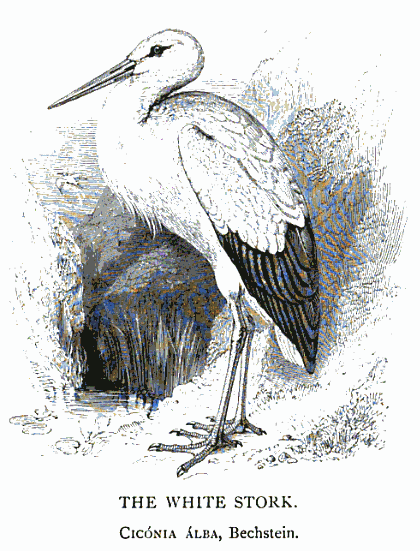 Last year when I was visiting Freinsheim, Germany, my cousin said to me: “The people here are upset because the storks don’t come any more.”
Last year when I was visiting Freinsheim, Germany, my cousin said to me: “The people here are upset because the storks don’t come any more.”
Since the European White Stork was not familiar to me, I did not fully grasp what Angela was telling me. I stumbled upon the significance of these birds since my return. The enormous, twiggy nest of the storks is welcome and encouraged on German rooftops, as storks bring good luck, fertility and prosperity. It is believed storks protect a house from fire. Like cats in the barn, storks feed on rodents, so keep down the vermin population. It was once thought storks had human souls.
A write-up on the European White Stork can be found at the Smithsonian National Zoological Park web site. Apparently, the disappearance of the storks in Freinsheim is one instance of a much larger problem.
The overall population of White Storks has declined steadily over the last half century. The decline in Western Europe has been the most pronounced. Pollution, pesticides and wetlands drainage have severely reduced suitable foraging habitat across the breeding range. Storks no longer breed in southern Sweden, Switzerland, western France, Belgium or southern Greece. In The Netherlands the number of breeding pairs has declined from 500 in 1910 to 5 in 1985. Denmark was home to 4000 pairs in 1890, but only 12 in 1989. Captive propagation and reintroduction efforts have been hampered by their tendency to produce overly tame birds, which over-winter in Europe without migrating normally.
In the 19th century storks were so plentiful, their broad wingspans darkened the sky as they migrated north from African shores. Another “melioration of the climate” (à la James Fenimore Cooper) changing our lives in ways we don’t even realize.
